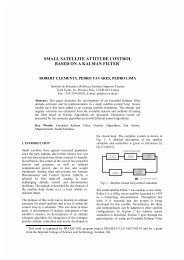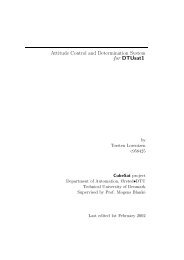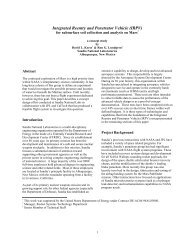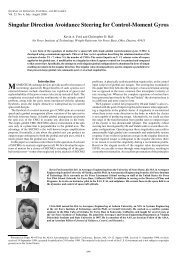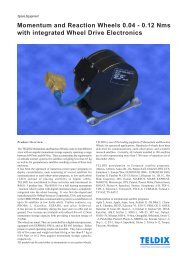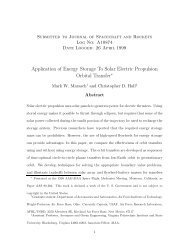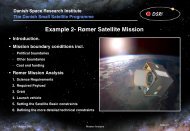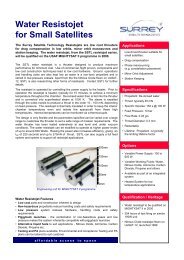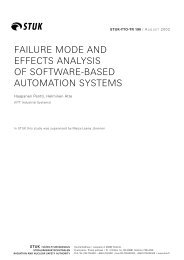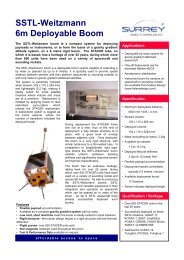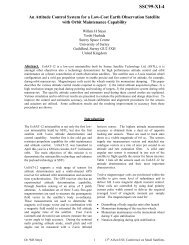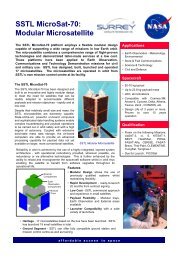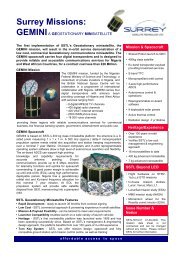Sea Launch User's Guide
Sea Launch User's Guide
Sea Launch User's Guide
You also want an ePaper? Increase the reach of your titles
YUMPU automatically turns print PDFs into web optimized ePapers that Google loves.
Evacuation of<br />
personnel<br />
All personnel, except for critical launch vehicle technicians, are<br />
transferred to the ACS, the connecting bridge is stowed, and the ACS is<br />
repositioned 6.5 km away.<br />
After the launch vehicle technicians complete final prelaunch checkouts,<br />
the technicians are quickly transferred by helicopter to the ACS just<br />
before rocket fueling.<br />
From this point on, the launch platform is under remote operations<br />
control from the ACS. Radio frequency links provide communications<br />
between the ground support equipment rooms and the spacecraft.<br />
Propellant loading<br />
A poll of launch management and the customer is conducted to give the<br />
“go” for launch vehicle propellant loading. The Zenit-3SL is loaded with<br />
propellants and compressed gases starting at L-3 hr. <strong>Launch</strong> holds of up<br />
to 4 hr can be accommodated and if a launch abort is called a recycle to a<br />
second launch attempt can be accomplished within 24 hr.<br />
Second “go” poll<br />
The next poll is conducted before disconnecting the launch vehicle<br />
umbilical. The transporter/erector returns to the hangar at L-17 min. Up<br />
to this point, a hold of 1 hr can be accommodated. Beyond this time the<br />
Zenit-3SL must be reinitialized, which takes up to 5 days.<br />
Reinitialization entails draining oxygen and kerosene from the Zenit-<br />
3SL, charging the spacecraft batteries if required, and returning the ILV<br />
to the hangar. Conditioned airflow to the spacecraft will be continued<br />
through any abort or recycle operations.<br />
Zenit-3SL in<br />
vertical<br />
configuration<br />
The Zenit-3SL is held in place on the launch table by hold down clamps<br />
at the base of the first stage. These clamps are not released until<br />
computers confirm that the Stage 1 operating thrust has been reached. In<br />
order to minimize exhaust effects on the launch platform and acoustic<br />
effects on the spacecraft, a water deluge system is used in the flame<br />
bucket (see fig. 8-24).<br />
8-22 D688-10009-1 REV B



